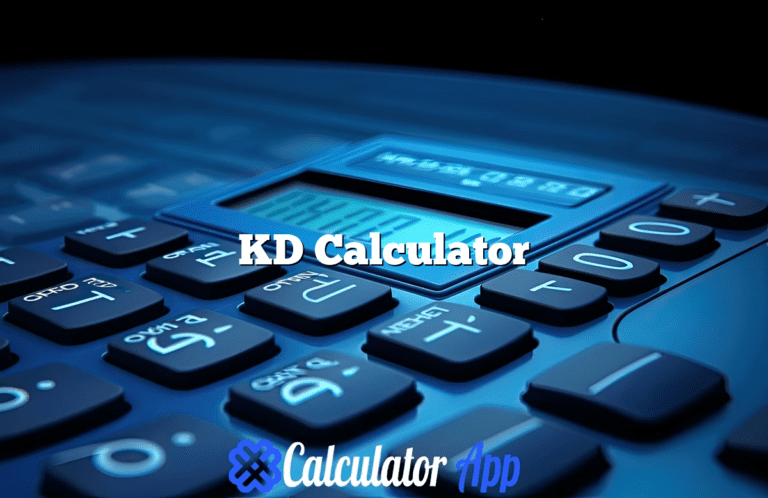Investment Calculator
Future Balance
Dynamic Report
| Year | Principal | Interest | Balance |
|---|
Introduction to Compound Interest Calculators
Compound interest calculators are essential financial tools that provide users with the ability to understand the potential growth of their investments over time. The primary purpose of these calculators is to illustrate how compound interest works, showcasing its ability to generate exponential returns on an initial principal amount by reinvesting accumulated interest. This dynamic process can significantly enhance the effectiveness of financial planning, guiding individuals in their journey towards achieving their financial goals.
At its core, the concept of compound interest hinges on the idea that interest is earned not just on the original amount but also on any interest that has previously been applied. This dual aspect of earning interest on interest can lead to substantial growth in a relatively short period, especially when one utilizes compound interest calculators to simulate various investment scenarios. These calculators empower users by allowing them to input different variables such as the initial investment amount, interest rate, and time frame, effectively enabling them to visualize the potential outcomes.
The value of these calculators cannot be overstated, as they serve not only as educational tools but also as strategic aids in investment decision-making. By understanding how small changes in interest rates or investment durations can yield significant differences in final amounts, users can make informed choices tailored to their personal finance strategies. Furthermore, the accessibility and user-friendliness of these calculators make them suitable for both novice investors and seasoned financial planners alike, as they foster a deeper understanding of investment dynamics. The growing popularity of compound interest calculators highlights their indispensable role in enhancing financial literacy and promoting smarter investment practices.
Key Features of Compound Interest Calculators
Compound interest calculators are powerful financial tools that offer users a multitude of functionalities to aid in effective financial planning. By understanding the key features of these calculators, individuals can harness the full potential of their investments and savings. Below are some essential functionalities and benefits that users can expect from these calculators:
- Graphical Representations of Growth: Many compound interest calculators provide visual graphs that illustrate the growth of investments over time. These graphical outputs help users quickly grasp the impact of compounding on their principal amounts and the overall benefits of long-term investments.
- Customizable Interest Rates: One significant feature of these calculators is the ability to input various interest rates. Users can simulate different scenarios by adjusting rates, allowing them to foresee the effects of potential market changes or varying investment options on their finances.
- Different Compounding Frequencies: Compound interest can be calculated on different frequencies – daily, monthly, quarterly, or annually. Most calculators offer the option to select these compounding intervals, providing users with a clearer picture of how often their interest generates additional income.
- Initial Investment and Additional Contributions: Compound interest calculators allow for the inclusion of an initial investment amount along with the ability to add recurring contributions. This feature helps in understanding how regular investments can accelerate financial growth through compounding.
- Total Interest Earned and Final Amount: At the end of the calculations, users can see the total interest earned over the specified period as well as the final amount accumulated. This transparency is crucial for effective financial planning and goal setting.
Understanding these features is vital for individuals who wish to optimize their financial strategies effectively. Compound interest calculators not only simplify complex calculations but also empower users to make informed decisions regarding their financial futures.
Importance of Using a Compound Interest Calculator
Utilizing a compound interest calculator is a crucial tool for individuals looking to maximize their investments and gain a deeper understanding of their financial growth potential. The significance of these calculators is multifaceted, offering several key benefits that simplify complex financial calculations.
First and foremost, a compound interest calculator streamlines the process of understanding how interest accumulates over time. Without such tools, investors may struggle with complicated mathematical formulas and the nuances of compounding frequency. These calculators allow users to input specific terms such as principal amount, interest rate, and duration, automatically generating precise output. This simplicity fosters confidence in both novice and seasoned investors, enabling them to navigate the intricacies of their financial portfolios with ease.
Another pivotal benefit is the visual representation of investment growth, which enhances comprehension. Many compound interest calculators provide graphical illustrations of how investments can grow over different periods. By visualizing potential growth trajectories, users can more easily comprehend the power of compounding interest. This visual aid can inspire long-term commitment to saving and investing, highlighting the impact of time on wealth accumulation.
Moreover, a compound interest calculator aids in informed decision-making by allowing users to explore various financial scenarios. Investors can adjust factors such as the monthly contributions, interest rates, or investment duration to see how these changes affect their overall returns. This capability empowers individuals to plan accordingly, with a clear understanding of how their choices influence future outcomes.
In conclusion, the importance of using a compound interest calculator lies in its ability to simplify complex calculations, provide insightful visualizations, and support informed financial decisions. These advantages significantly enhance the user experience, making financial planning more accessible and effective.
Detailed Breakdown of Calculator Features
Compound interest calculators are designed to aid individuals in understanding and maximizing their financial growth. Each calculator may offer unique features tailored to different financial scenarios, making them suitable for a wide range of users, from novices to experts. One prominent aspect is the ability to customize calculations based on specific parameters, such as initial investment amount, interest rate, and duration. By unlocking these customizable options, users can simulate various financial situations, helping in making informed decisions about their investment strategies.
Another significant feature includes the automatic updates based on input changes. This real-time feedback is particularly beneficial for users exploring multiple investment options. As they adjust factors such as the interest rate or the length of the investment period, the calculator recalibrates the results instantaneously. This dynamic interaction not only enhances user engagement but also provides more clarity regarding how small changes can significantly impact the final amount accrued through compound interest.
Additionally, compound interest calculators often cater to both novices and experts, ensuring that anyone can benefit from their utility. For those new to financial planning, many calculators come with built-in tutorials or help sections that provide guidance on interpreting results and understanding terms related to compound interest. On the other hand, seasoned investors may find advanced options that allow for detailed customizations, such as adding additional contributions over time or varying the interest rate at different intervals. This diversity in functionality enhances the usability of these calculators, ensuring they meet the needs of all users effectively.
In summary, compound interest calculators play a crucial role in financial planning by offering unique features tailored to various user needs, providing automatic updates on input dynamics, and accommodating both novice and expert users. By utilizing these tools, individuals are better equipped to navigate their financial futures with confidence. (See Also: Roof Truss Calculator)
Step-by-Step Guide: How to Use a Compound Interest Calculator
Using a compound interest calculator can significantly simplify the process of estimating potential investment returns. To effectively harness its capabilities, follow these detailed steps.
First, identify the key inputs required for your calculations. Most compound interest calculators will ask for the principal amount, which is the initial sum of money invested or borrowed. Next, you will need to enter the annual interest rate. This rate is often expressed as a percentage and is crucial for determining how much interest will accrue over time.
After inputting these two essential pieces of information, the next step is to specify the compounding frequency. This defines how often the interest will be applied to the public balance, and common options include annually, semi-annually, quarterly, or monthly. Users should carefully consider how this frequency impacts their investment’s overall growth.
Next, you will need to indicate the time period over which the investment will grow. This is typically represented in years. Be mindful that longer investment durations usually enhance the effects of compounding, thereby increasing returns.
Once all the necessary inputs are filled in, many calculators provide the option to customize further settings. For instance, users may have the option to include additional contributions over time, which can significantly affect the final outcome. Inputting a regular contribution amount allows you to see how consistent savings can amplify your investment growth.
Finally, after all adjustments are made, click the “Calculate” button. The tool will then deliver an output showcasing the total amount after the specified period, alongside the interest earned. By systematically entering the required data and making use of the provided options, even individuals with minimal financial expertise can confidently navigate the complexities of compound interest calculators.
Benefits of Using Compound Interest Calculators vs. Manual Calculations
In the realm of personal finance, understanding compound interest is essential for maximizing returns on investments. One of the most practical tools available for this purpose is the compound interest calculator. Utilizing such a calculator offers numerous advantages over manual calculations, particularly in terms of speed, accuracy, and ease of use.
When engaging in manual calculations, individuals are often faced with the complexities of formulas, such as \( A = P(1 + r/n)^{nt} \), where variables represent principal, rate, time, and the number of times interest compounds. The intricacies of these calculations can lead to human error, causing potentially significant discrepancies in projected outcomes. Conversely, compound interest calculators automate this process, allowing users to input their data and receive instantaneous results, thus drastically reducing the time required for completion.
Consider a scenario where an investor wishes to determine the future value of an investment over several decades. Performing this calculation manually could involve multiple steps and recalculating values repeatedly to account for different variables. A compound interest calculator simplifies this scenario, providing a comprehensive breakdown in a matter of seconds. It streamlines the comparison of various investment options by easily adjusting parameters such as interest rates and compounding frequencies with just a few clicks.
Moreover, these calculators typically feature intuitive user interfaces that guide individuals through the process, making them accessible even for those without a financial background. This accessibility encourages broader engagement with investment strategies, highlighting the importance of saving and investing for the future.
Utilizing compound interest calculators not only saves time but also enhances the reliability of calculations. With their capacity to instantly compute complex mathematical outcomes, they are invaluable tools for both novice investors and experienced financiers alike. This clear advantage illustrates why relying on technology for financial calculations is increasingly becoming the norm.
Real-World Applications of Compound Interest Calculators
Compound interest calculators serve as invaluable tools for individuals aiming to achieve their financial objectives by providing critical insights into the time value of money. These calculators have practical applications across various financial scenarios, enhancing decision-making processes and ultimately promoting financial growth. (See Also: Round to the Nearest Cent Calculator)
One of the most significant uses of compound interest calculators is in retirement planning. Individuals can input their current savings, desired retirement age, and expected return rates to project how much they need to save each month to achieve their retirement goals. This foresight allows users to strategize effectively, ensuring they accumulate sufficient funds to maintain their desired lifestyle upon retiring. Additionally, by visualizing the impact of increasing contributions or delaying retirement, users gain a clearer understanding of how their choices influence long-term financial outcomes.
Furthermore, these calculators play a critical role in developing savings strategies. In an age where financial literacy is paramount, using a compound interest calculator can help individuals create personalized savings plans. For example, users can calculate how much they will save if they contribute a specific amount regularly to a savings account, highlighting the benefits of consistent saving. By assessing different interest rates and contribution frequencies, users can identify optimal saving strategies tailored to their financial circumstances.
Investment forecasting is another area where compound interest calculators provide substantial value. Investors can project the future growth of their portfolios by inputting initial investment amounts, anticipated return rates, and the investment duration. This forecasting enables investors to make informed decisions about asset allocation and risk management, aligning their strategies with their financial aspirations.
In conclusion, the adaptability of compound interest calculators makes them essential tools in various financial planning contexts. By utilizing these calculators effectively, individuals can make informed decisions that enhance their financial well-being and facilitate the achievement of their financial goals.
What Sets Compound Interest Calculators Apart
Compound interest calculators have become essential tools for anyone looking to effectively manage their finances. What sets these calculators apart from standard ones are their unique features, which enhance user experience and make financial planning significantly easier. One of the most notable distinguishing factors is mobile accessibility. Many modern compound interest calculators are designed as mobile-friendly applications or websites. This allows users to perform calculations on-the-go, ensuring they can continuously monitor their investments or savings anytime, anywhere.
Another key feature that elevates compound interest calculators beyond basic functionality is the inclusion of advanced analytics. These calculators often provide users with detailed projections regarding the growth of their investments over time, factoring in variables such as varying interest rates, regular contributions, and inflation. This level of analysis enables users to have a clearer understanding of their financial trajectory, making informed decisions about their savings and investments.
Integration with financial planning tools is yet another aspect that sets superior compound interest calculators apart. By allowing users to connect their calculators with budgeting software or investment account dashboards, these calculators streamline the process of tracking total financial health. Such integrations provide a holistic overview and customizable settings that reflect an individual’s financial context. Ultimately, these unique selling points foster greater user confidence and engagement by offering comprehensive functionalities that go beyond simple calculations.
In light of these advanced features, it is evident that choosing the right compound interest calculator can significantly influence one’s financial strategy. Users who leverage these tools not only gain precise insights into their growth potential but also enhance their overall understanding of financial management in a dynamic landscape.
Tips, Troubleshooting, and Frequently Asked Questions
Utilizing a compound interest calculator can significantly enhance your financial planning and investment strategy. To make the most out of these tools, start by ensuring you input accurate information. Even a slight miscalculation in your investment amount, interest rate, or time frame can lead to misleading results. Hence, double-checking your inputs is crucial. Additionally, familiarize yourself with the different options available in the calculator, such as payment frequency and compounding intervals, which can affect your final outcomes. Utilizing these features effectively will provide a more tailored and accurate estimation of your potential earnings.
When using a compound interest calculator, users sometimes encounter certain challenges. A common issue includes discrepancies in results, often stemming from varying compounding periods. If you notice significant differences, ensure that you are comparing the same compounding frequency, such as annually versus monthly. Furthermore, if the calculator is not functioning properly, clearing your browser cache or switching to a different browser may resolve the issue. Sometimes, a simple refresh of the webpage can also help.
Here are some frequently asked questions regarding compound interest calculators:
1. How do I calculate my returns using this tool?
Simply input your initial investment, interest rate, and time period, along with any additional contributions you plan to make.
2. What is the impact of different compounding frequencies?
More frequent compounding periods generally result in higher returns, as interest is calculated and added to the principal more often.
3. Can I use this calculator for retirement planning?
Absolutely, it’s an excellent resource for estimating the growth of retirement savings over time.
4. Are all calculators the same?
Different calculators may have various features, so it’s beneficial to explore multiple options for the best results.
5. How often should I check my calculations?
It’s wise to reassess your projections periodically, especially if there are changes in your financial situation or market conditions.
6. Is it possible to calculate negative growth?
Some calculators allow for inputting negative growth, which can be useful in scenarios where returns may decrease.
These tips and FAQs aim to enhance your experience with compound interest calculators, guiding you toward making informed financial decisions.
Conclusion
Throughout this exploration of compound interest calculators, we have illuminated the essential features and benefits these tools offer for effective financial planning. Utilizing compound interest calculators enables individuals to visualize the power of compounding over time, assisting them to make informed decisions regarding investments, savings, and debt management. By inputting various parameters such as principal amount, interest rate, and time duration, users can gain valuable insights into how their money can grow exponentially with the correct strategies in place.
Moreover, the accessibility of these calculators enhances their appeal, as they can be found on numerous financial websites and apps. This convenience allows users—from novice investors to seasoned financial strategists—to readily calculate the potential returns on their investments or the cost of loans. As a result, compound interest calculators play a pivotal role in demystifying complex financial concepts, ultimately leading to improved financial literacy.
Incorporating the use of compound interest calculators into one’s financial strategy is not merely about crunching numbers; it is about empowering individuals with the knowledge to set and achieve their financial goals. Whether aiming to accumulate retirement savings, plan for a child’s education, or optimize debt repayment strategies, these calculators serve as invaluable resources for strategizing every step of the way.
In conclusion, we encourage readers to actively engage with these tools, leveraging their capabilities to unlock their financial potential. By understanding and applying the principles of compound interest through practical calculators, individuals can take significant strides towards achieving long-term financial success. The journey to financial growth begins with informed choices, and compound interest calculators are a vital component of that journey.






